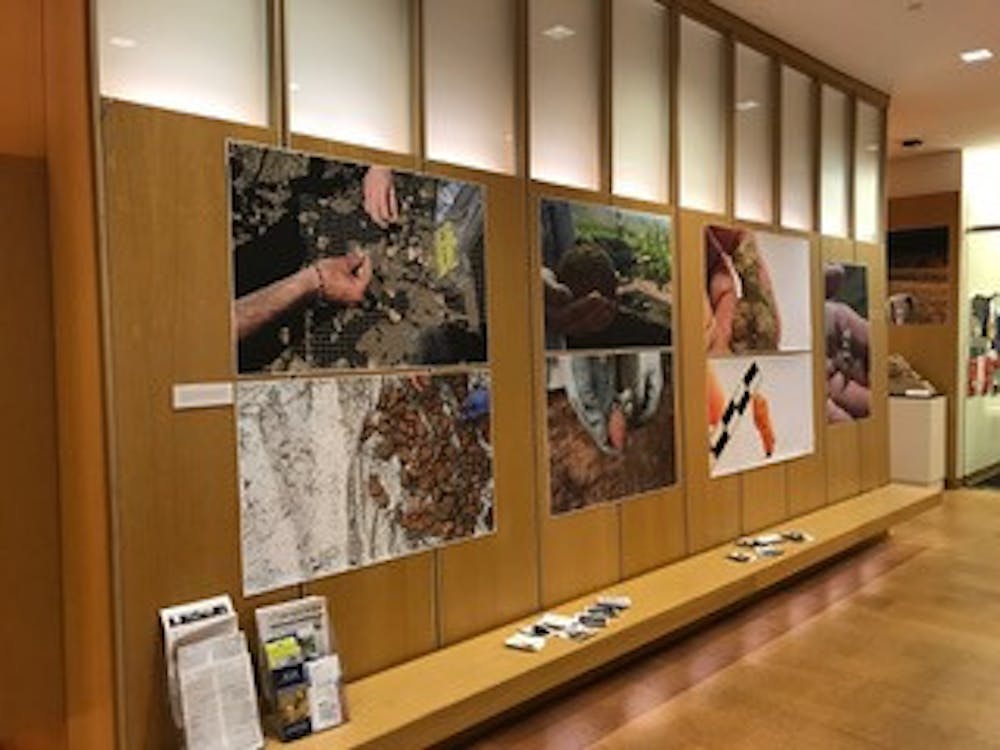The photo exhibition “Light-Writings: Koutroulou Magoula 2017-2018” at the Joukowsky Institute for Archeology and the Ancient World features the people, materials and processes of an archeological dig.
Last summer, Yannis Hamilakis, professor of archaeology and modern Greek studies, and six undergraduate students from Brown and the Rhode Island School of Design traveled to central Greece for four weeks. They participated in an ongoing excavation of the archeological site Koutroulou Magoula, a Neolithic village and burial site. Two of these students, Justin Han ’22 and Kelley Tackett ’20, Herald copy desk chief, helped Hamilakis curate the exhibition, choosing the pictures out of hundreds taken at the site, Tackett said. Fotis Ifantidis, an archeologist and photographer, took the photos last summer.
Han and Tackett divided the photographs into five categories: Tactilities, Landscapes, Diggers, Bodies and Theatre. The subjects of the pictures vary widely as they feature panoramic scenery, students digging in the dirt, a spoken-word performance and an excavated skeleton. The curators wanted to include “photographs that comment visually on the process of archaeology, on excavation and on field practices, photographs which are at the same time artistic creations but which can also operate as photo-ethnographic objects,” the exhibition flyer read. “We want to exhibit these things to generate more discussion,” Hamilakis said, explaining how the photos provoke interactions between humans and artifacts.
Tackett described how the photographs capture the human aspect of an archeological dig. “We really wanted to think about the people who were doing archeology and the processes that were people-driven rather than thinking about it as a purely scientific endeavor,” Tackett said. Every category in the exhibition includes people, she noted. She described how people were present at every juncture of the experience, from the team working on the project to the community workers around them. In lieu of captions, the exhibition incorporated excerpts from the students’ journals.
The exhibition also included a sound component, created by Han. Sounds of chickens clucking, dogs barking and traffic driving filled the room. “I recorded in the town neighboring the site, Neo Monastiri, and I was also interested in working with the sound of labor — thinking how we can represent that through sound in way that is less problematic than if it were to be recognized visually,” Han said. The recordings were also used as a background to the spoken-word performance of a local artist who performed at a community gathering in Neo Monastiri. The performance centered around all the routes that different peoples and objects had taken to arrive at that place.
Halle Krieger ’21, another one of the students who worked on the dig at Koutroulou Magoula, explained her project involving the clay figurines that were found on the site. More than 400 figurines were found at Koutroulou Magoula, Krieger said, and she created a clay model of one for the exhibition using local clay that she brought from a riverbed near the site. Krieger was also the student who first discovered a foot while digging, which would eventually lead the team to excavate an entire skeleton. The exhibit featured pictures of the skeleton alongside those of students in the process of excavating.
Correction: A previous version of this article misspelled Head Copy Chief Kelley Tackett's '20 name as Kelly Tackett. The Herald regrets the error.





